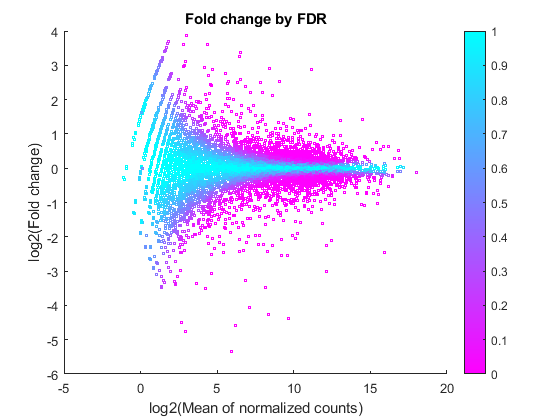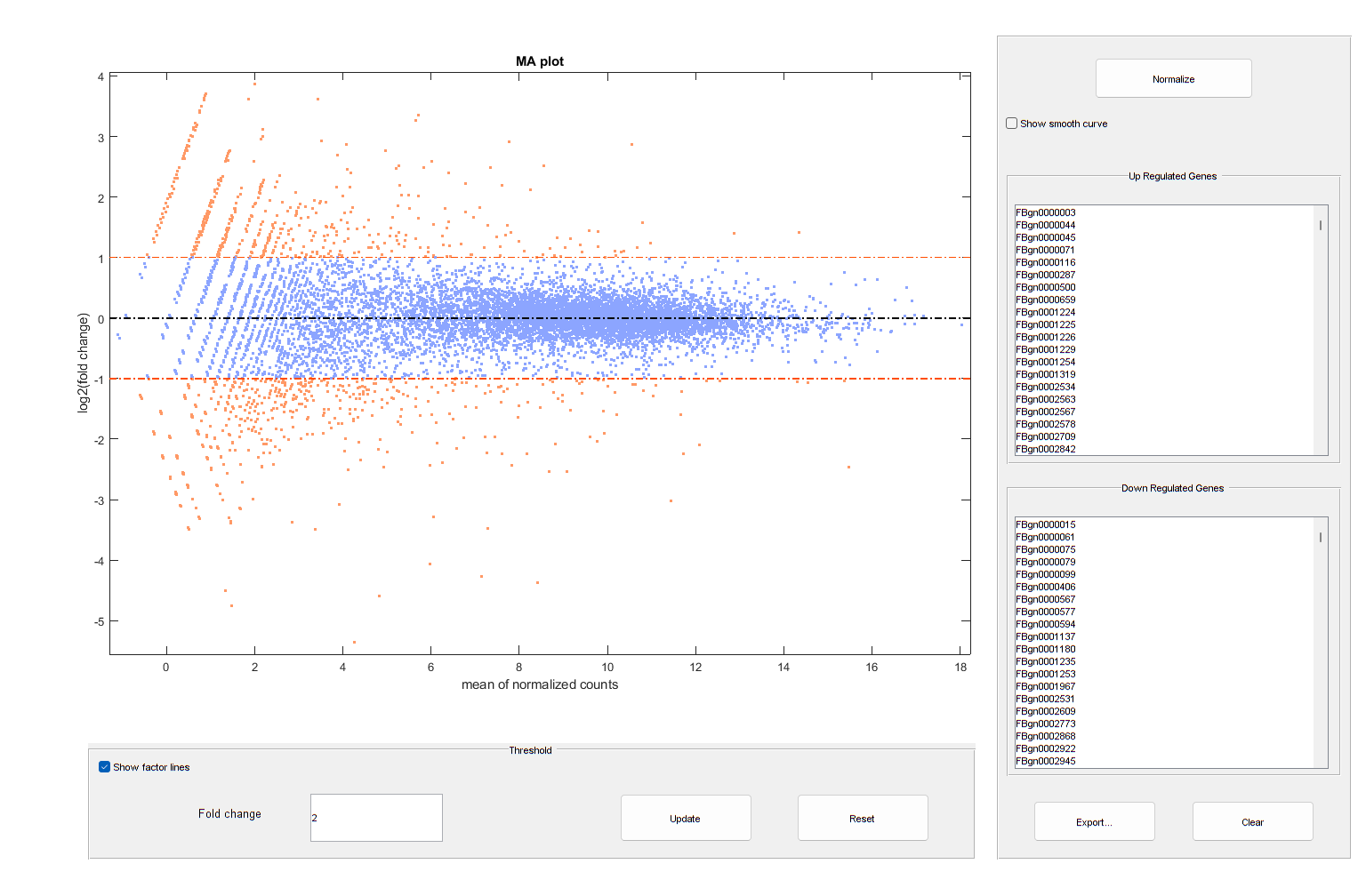rnaseqde
Syntax
Description
diffTable = rnaseqde(countTable,conditionVariables1,conditionVariables2)countTable and performs differential
expression analysis between the conditions (or samples) in
conditionVariables1 and conditionVariables2. The
rows of countTable represent genes (or features), and the columns
represent the conditions. The function first divides each condition by a library size factor
to normalize the count prior to performing the hypothesis test. This size factor is equal to
the median ratio of each feature over the geometric mean of the feature in all conditions.
The function uses an exact test to determine the differences between two groups of counts
that are each assumed to follow a negative binomial distribution [1].
diffTable = rnaseqde(___,Name=Value)
Examples
Input Arguments
Name-Value Arguments
Output Arguments
References
[1] Anders, Simon, and Wolfgang Huber. “Differential Expression Analysis for Sequence Count Data.” Genome Biology 11, no. 10 (October 2010): R106. https://doi.org/10.1186/gb-2010-11-10-r106.
[2] Robinson, Mark D., and Gordon K. Smyth. “Small-Sample Estimation of Negative Binomial Dispersion, with Applications to SAGE Data.” Biostatistics 9, no. 2 (July 11, 2007): 321–32.
[3] Marioni, J. C., C. E. Mason, S. M. Mane, M. Stephens, and Y. Gilad. “RNA-Seq: An Assessment of Technical Reproducibility and Comparison with Gene Expression Arrays.” Genome Research 18, no. 9 (July 30, 2008): 1509–17.
[4] Benjamini, Y., and Hochberg, Y. 1995. Controlling the false discovery rate: A practical and powerful approach to multiple testing. J. Royal Stat. Soc. 57:289–300.
[5] Storey, John D. “A Direct Approach to False Discovery Rates.” Journal of the Royal Statistical Society: Series B (Statistical Methodology) 64, no. 3 (August 2002): 479–98.
[6] Brooks, A. N., L. Yang, M. O. Duff, K. D. Hansen, J. W. Park, S. Dudoit, S. E. Brenner, and B. R. Graveley. “Conservation of an RNA Regulatory Map between Drosophila and Mammals.” Genome Research 21, no. 2 (February 1, 2011): 193–202.
Version History
Introduced in R2021b

